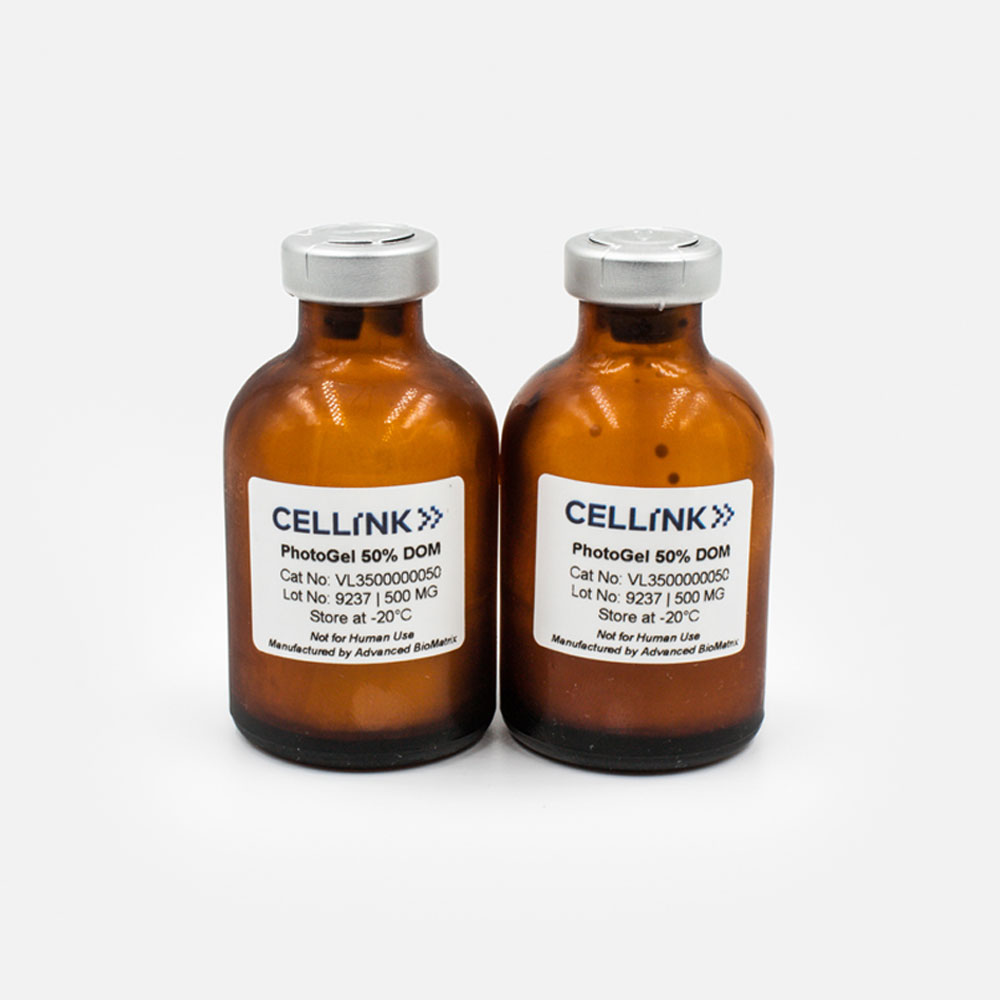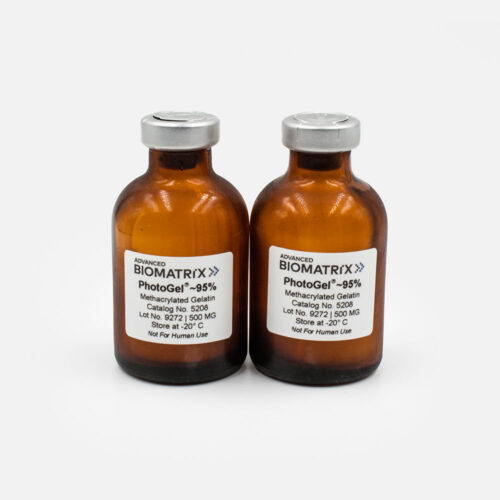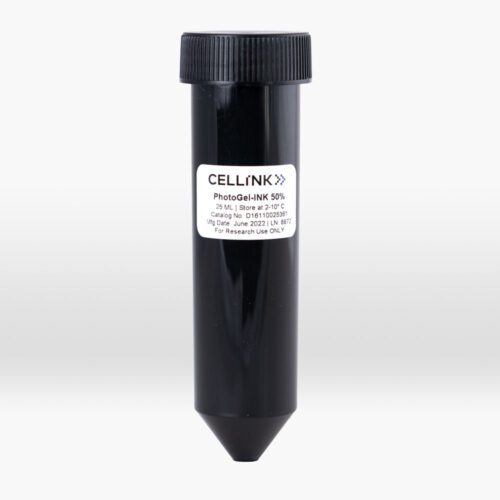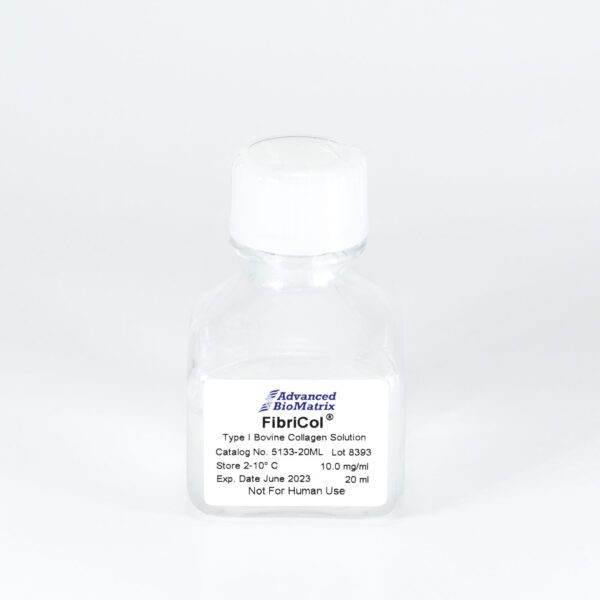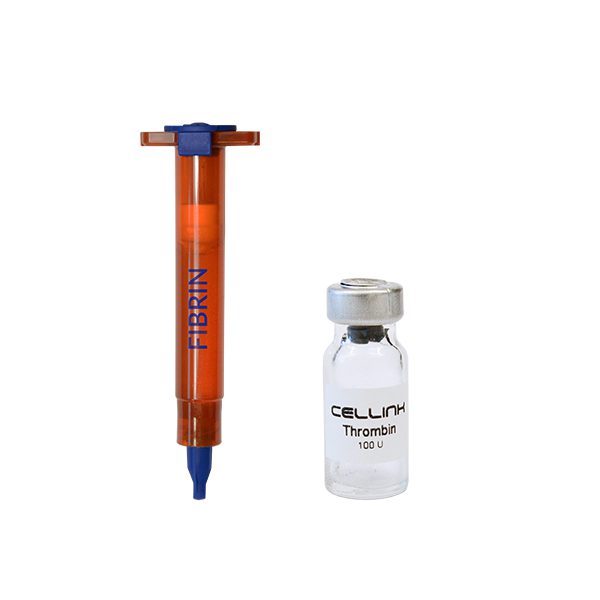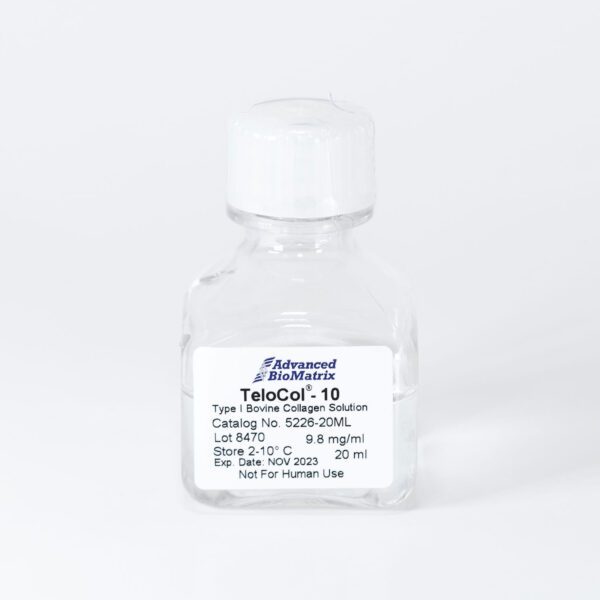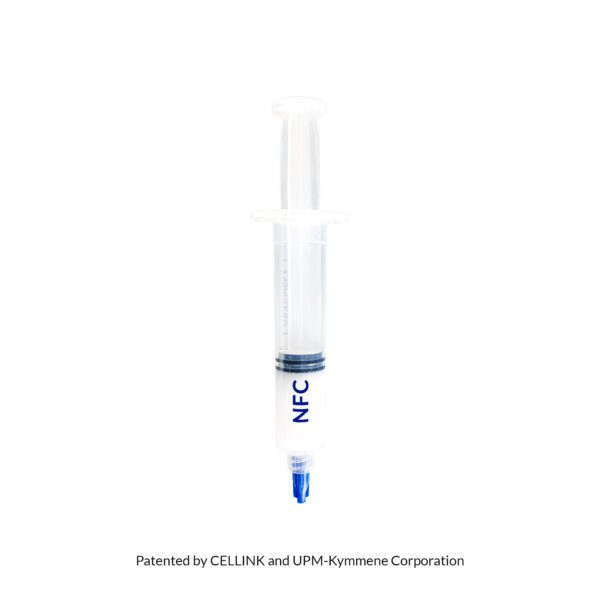Description
PhotoGel 50% DS is lyophilized GelMA (gelatin methacrylate). It’s a freeze-dried product of porcine gelatin functionalized with methacrylate groups. GelMA is one of the most popular biomaterials in tissue engineering as it can be used in a variety of applications.
PhotoGel 50% DS is easy to dissolve in our Reconstitution Agent P at your target concentration to prepare your unique bioink. The addition of a photoinitiator is vital to make your bioink photocrosslinkable and thereby stable in cell culture applications.
Recommended for use with BIO X, a temperature-controlled printhead and a cooled print bed, or INKREDIBLE+ with a heated printhead, as well as BIONOVA X.
Applications
- In a low concentration formulation for use with the BIO X EMD Printhead to generate microspheres
- In a high concentration formulation to generate bioinks such as GelMA Bioink or blended with other additives to generate your own unique bioink.
- Compatible with thickeners such as Nanofibrillated Cellulose, Xanthan Gum, and Glucomannan.
- After 3D cell culture you can easily harvest the cells for analysis using the Cell Collect G Bioink Lysis Reagent.
Product information
- Two 500 mg bottles of PhotoGel 50% DS (sterile) (lyophilized GelMA).
- Minimum 9 months shelf life.
- Optional photoinitiator: LAP or Irgacure 2959 (non-sterile)
- For research use only. Not for human use.
Specifications
| Appearance | White to off-white lyophilizate |
| Sterilization Method | Filtration |
| Sterility – USP modified | No growth |
| Form | Lyophilized Powder |
| Package Size | 1 gram (2 x 500 mg) |
| Storage Temperature | -20°C |
| Shelf Life | Minimum of 6 months from date of receipt |
| Degree of Methacrylation | 45 – 55% |
| Viscosity | 168±60 Pa·s |
| pH | 7.0 – 7.4 |
| Source | Type A, 300 Bloom, Porcine Gelatin |
| Hydrogel Young’s Modulus E (Pa) | Characteristic |
Publications
The latest publications using PhotoGel 50% DS.
Trophoblast Migration with Different Oxygen Levels in a Gel-Patterned Microfluidic System
Ko, Jeon, Kim. (2022) Micromechanics 13(12)
https://www.mdpi.com/2072-666X/13/12/2216
Bioprinting using PEGDMA-based hydrogel on DLP printer
Chang, Ching, Hashimoto. (2022) Materials Today: Proceedings 70
https://doi.org/10.1016/j.matpr.2022.09.017
Biomaterial composition and stiffness as decisive properties of 3D bioprinted constructs for type II collagen stimulation
Martyniak, Lokshina, Cruz, et al. (2022) Acta Biomaterialia 152
http://dx.doi.org/10.1016/j.actbio.2022.08.058
Calcium supplementation of bioinks reduces shear stress-induced cell damage during bioprinting
Fischer, Nosratlo, Hast, et al. (2022) Biofabrication 14
https://iopscience.iop.org/article/10.1088/1758-5090/ac84af/meta
Optical 4D oxygen mapping of microperfused tissue models with tunable in vivo-like 3D oxygen microenvironments
Wesseler, Johansen, Kiziltay, et al. (2022) Lab on a Chip 22 (21)
https://chemrxiv.org/engage/chemrxiv/article-details/61e494a7eab6efa4b7e3bc8a
